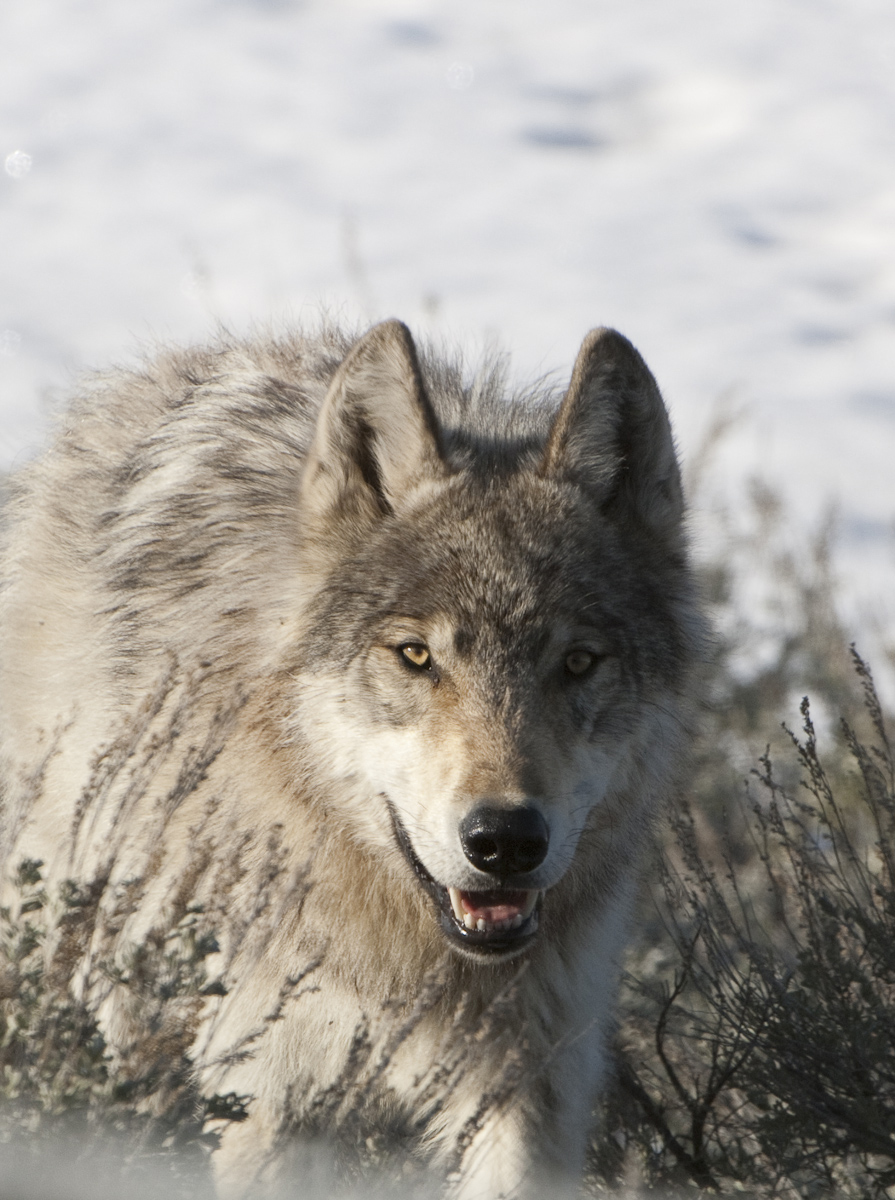In the 1920’s the last wolf pack was killed in Yellowstone National Park. In January of 1995 fourteen gray wolves were captured in Canada and relocated to Yellowstone’s Lamar Valley, amid huge controversy. In 1998, 17 more Canadian wolves were placed in the park, and ten more from northwestern Montana by 1997. Today, after wild swings in population, 10 packs survive in Yellowstone.
The population outside the pack is thriving. According to the U.S. Fish and Wildlife services:
But what about the other animals involved: elk, livestock, and humans? And all the other animals indirectly affected by wolves changing the predatory pyramid in the Rocky Mountain west. At the great risk of oversimplifying: there is good news and bad news. And people are still divided about the issue for all kinds of reasons.
The primary hardship at this point seems to be for elk and hunters. There’s not doubt that elk numbers have plummeted in the last twenty years. The complicated part of this is that the research, done by scientists and fish and game organizations, suggests that the elk decline is primarily being driven by habitat loss.
One three year study published in June of 2013, by Wyoming Cooperative Fish and Wildlife Research Unit at the University of Wyoming, found that the negative impact from wolves, not just death, but impact, is still less than the impact from habitat loss, bears, and humans.
But that doesn’t make hunters any happier that they have to share the elk that are around with wolves.
The cattle and sheep ranchers have suffered losses but that seems to be stabilizing. Ranchers seem to be having less predation now that laws to protect their herds have been relaxed and the hunting season has made wolves that come onto a sheep or cattle ranch not long for this world.
The whole trophic cascade thing, where the landscapes does better when a top predator is in returned to keep elk and deer from overwhelming the landscape that feed other animals, that’s been proven. If you visit the Lamar Valley with all the bazillion other tourists this year and look at picture from 20 years ago you can see it with your own eyes. Tree don’t lie.
Humans, are pretty much as crazy as we’ve always been. We are as amazing and as stupid as we were before wolves were put back in the park. Nothing to be done for that apparently.


